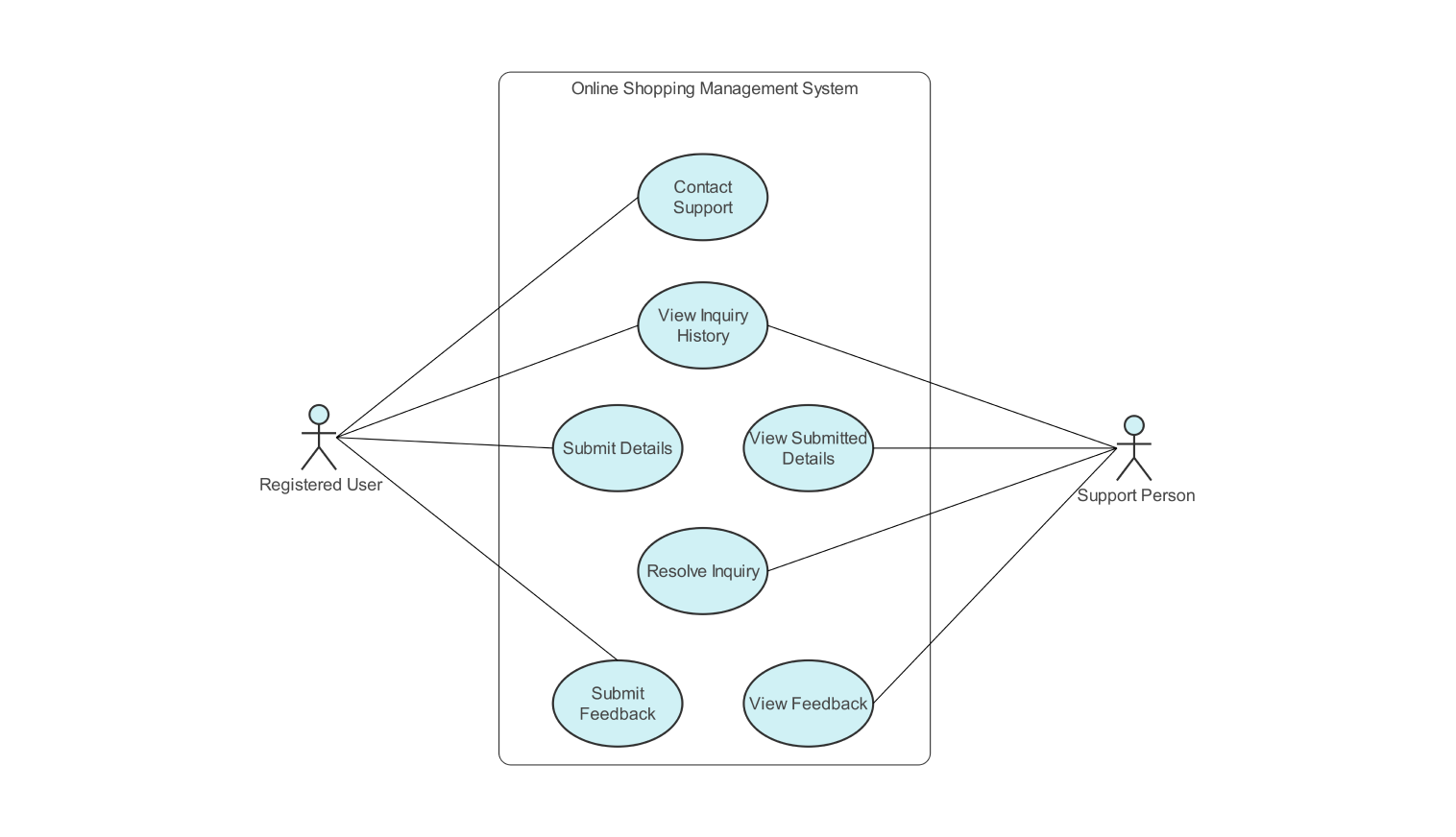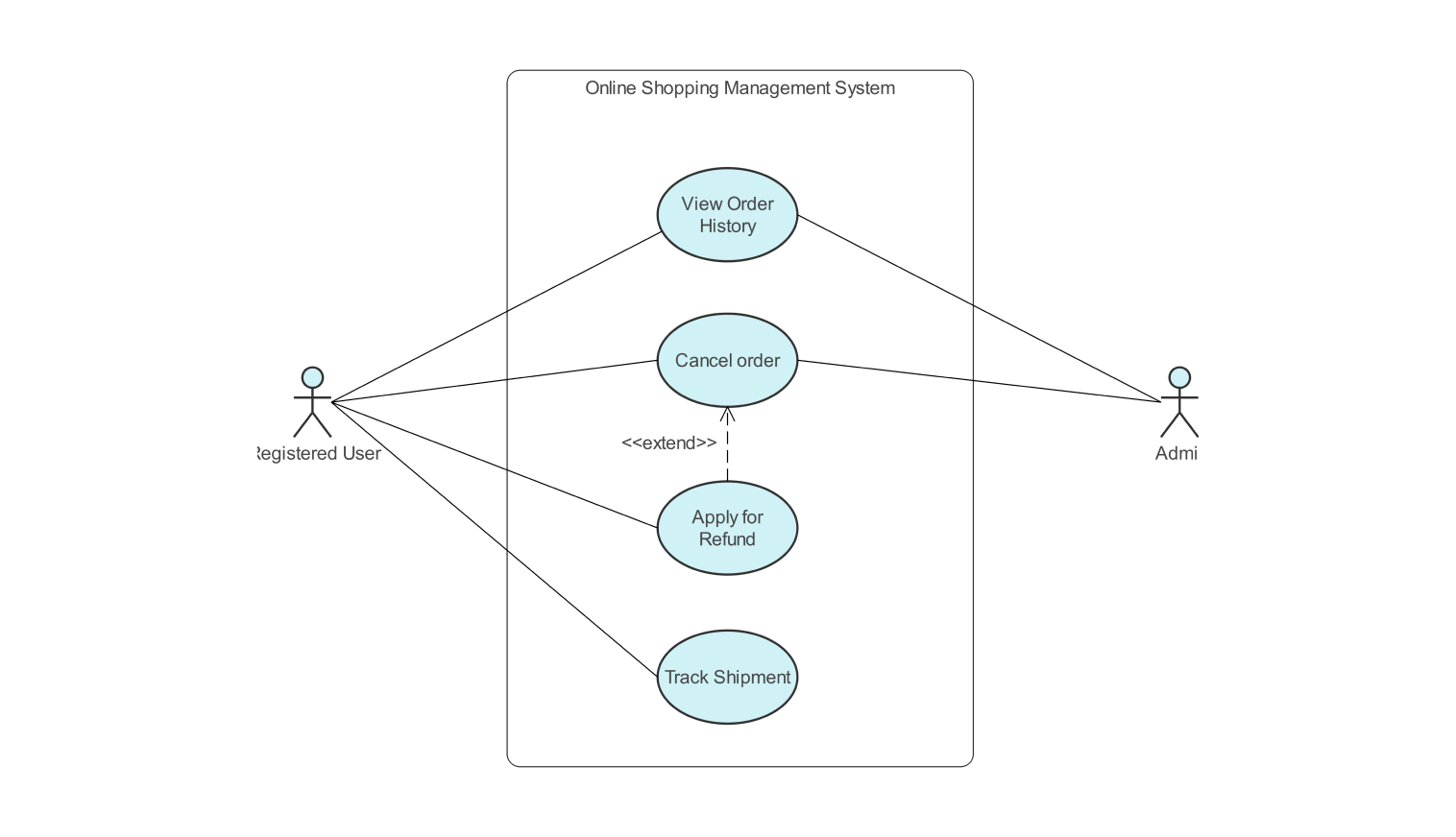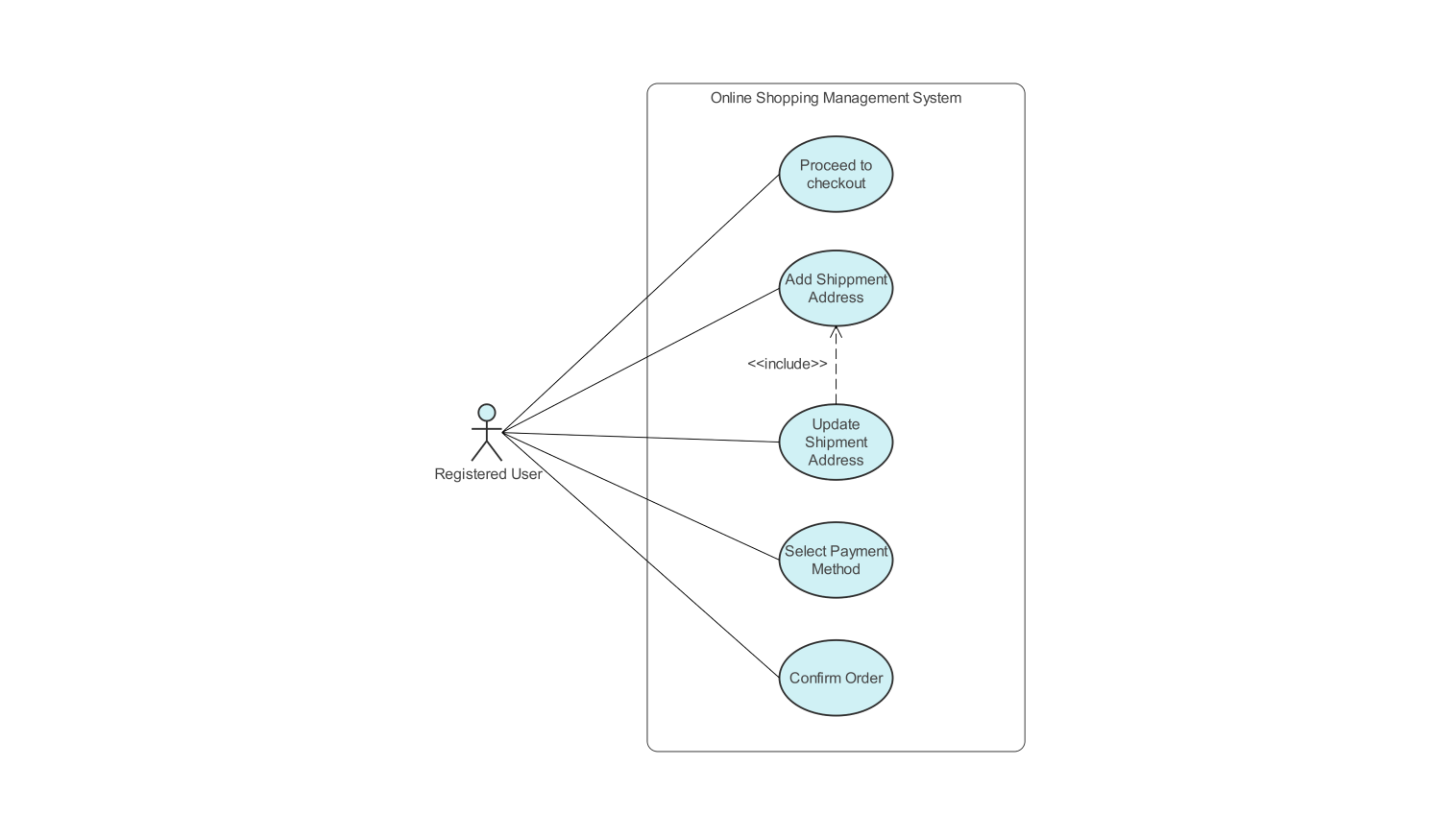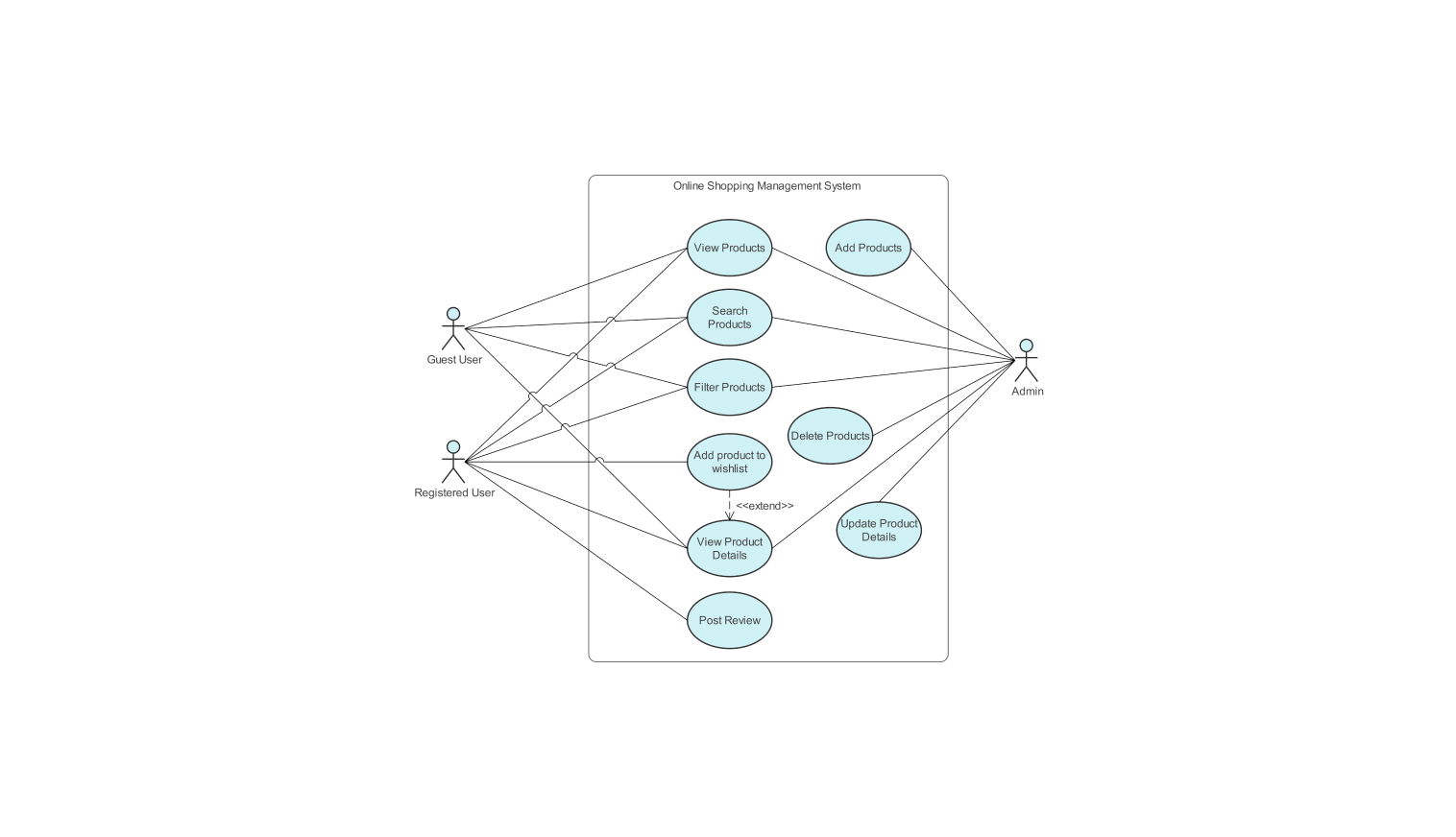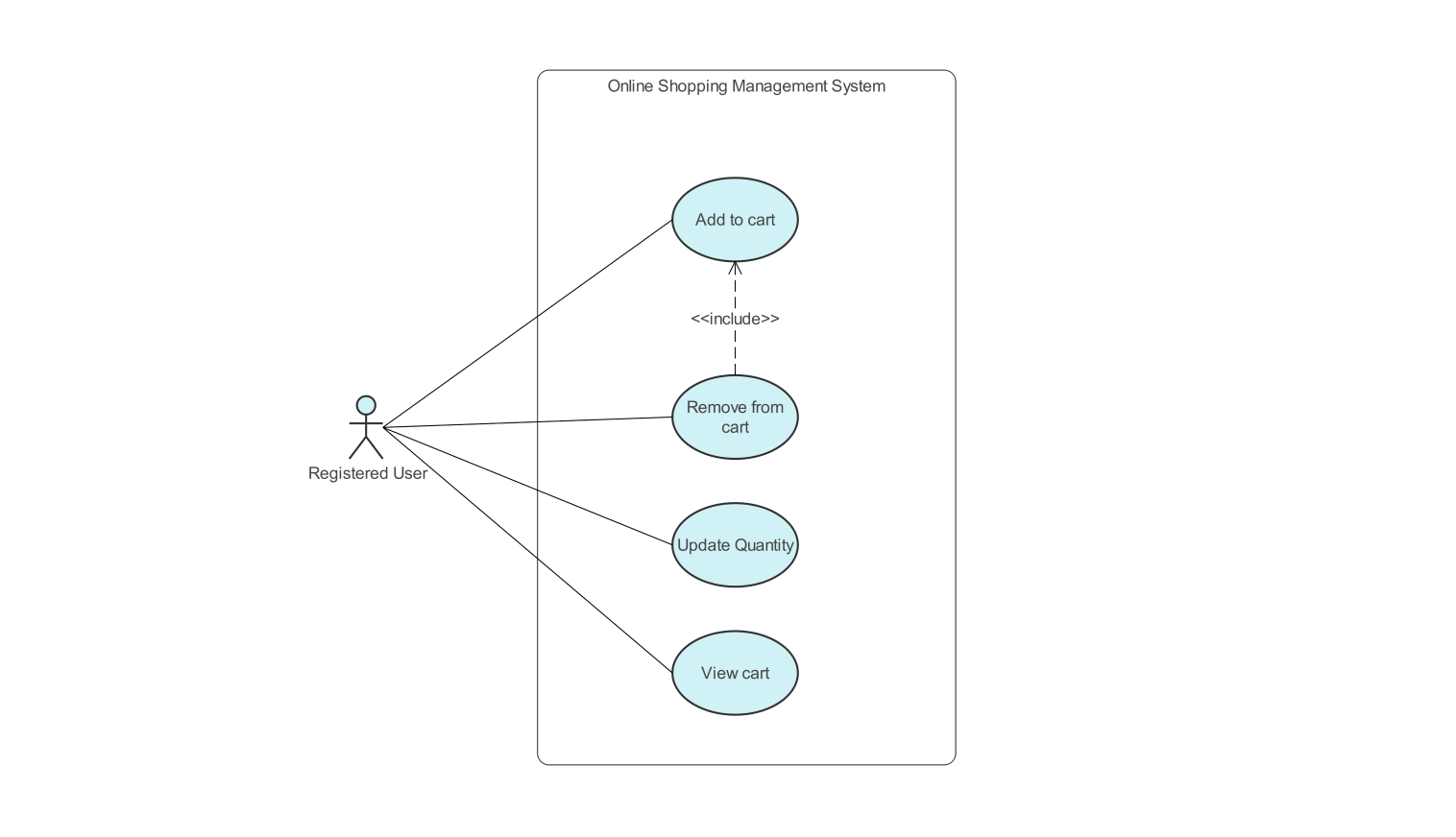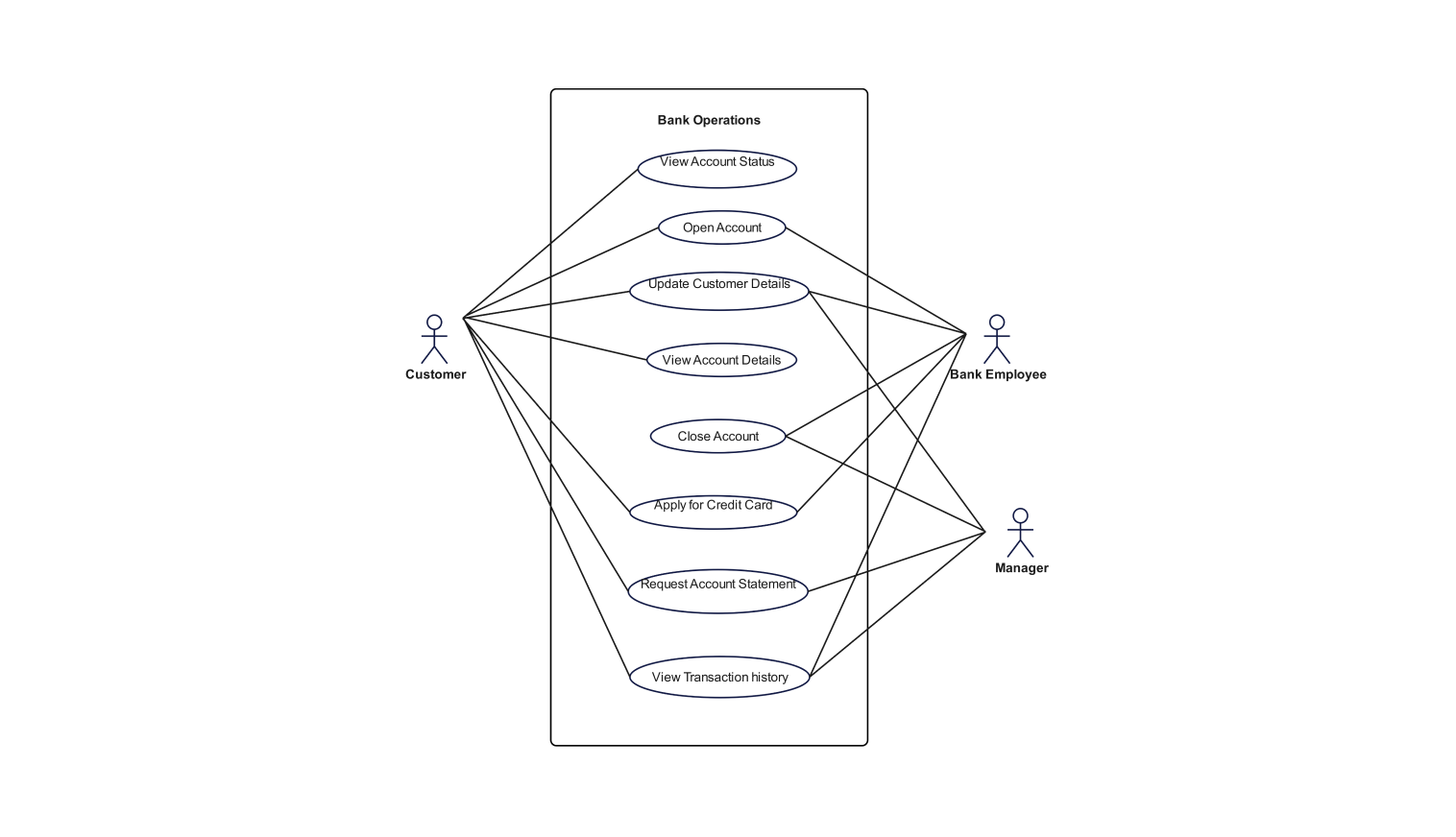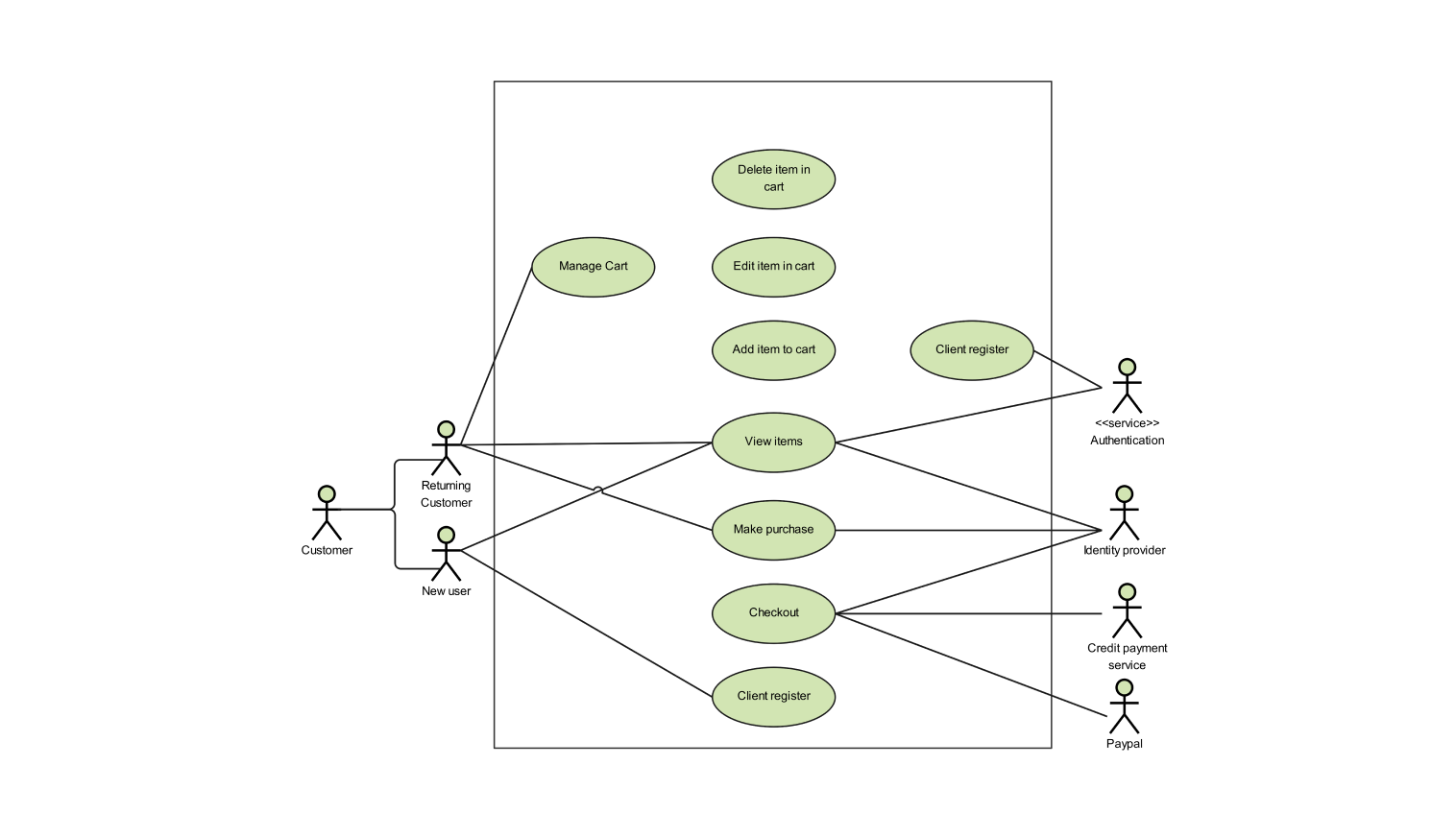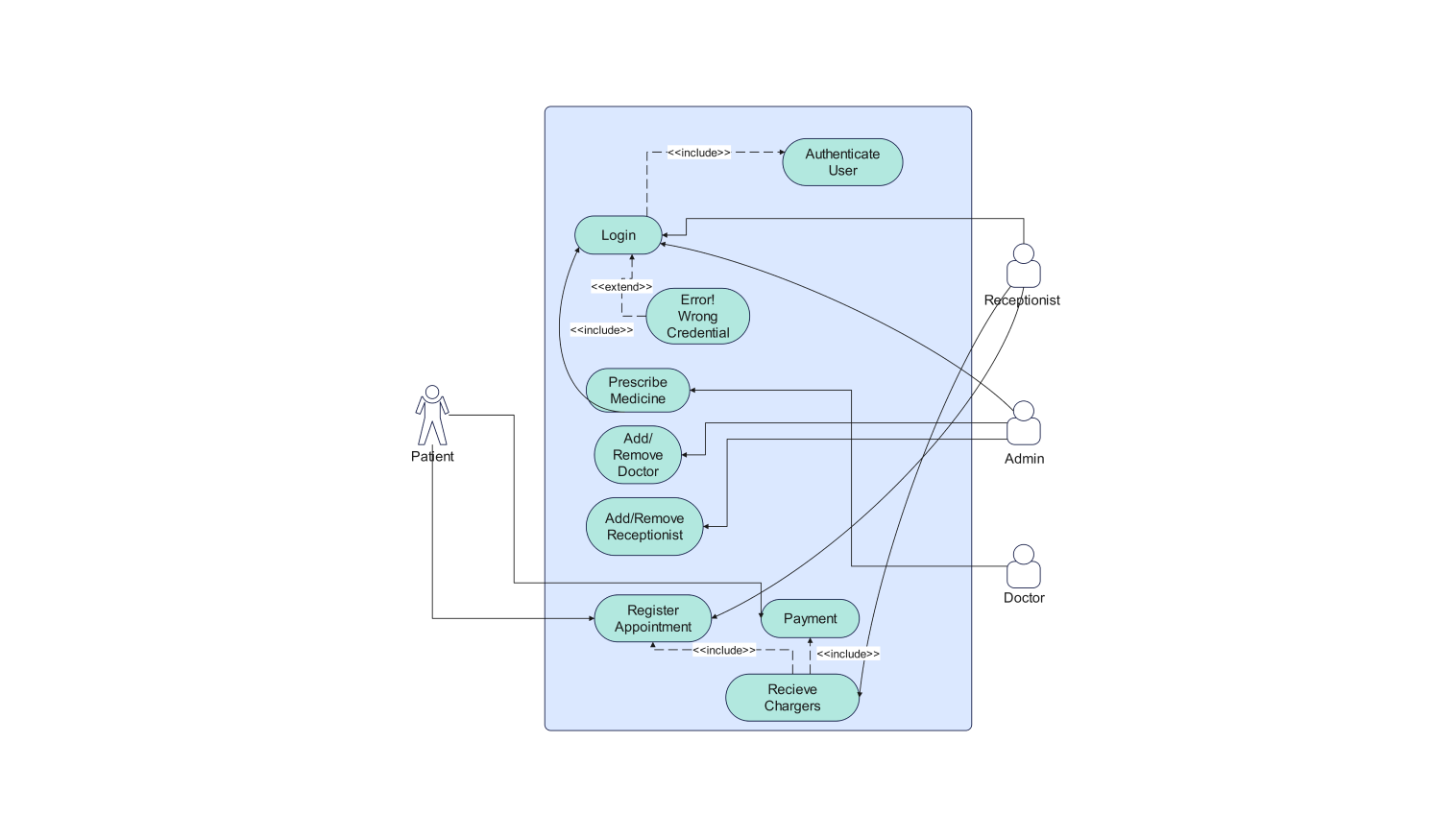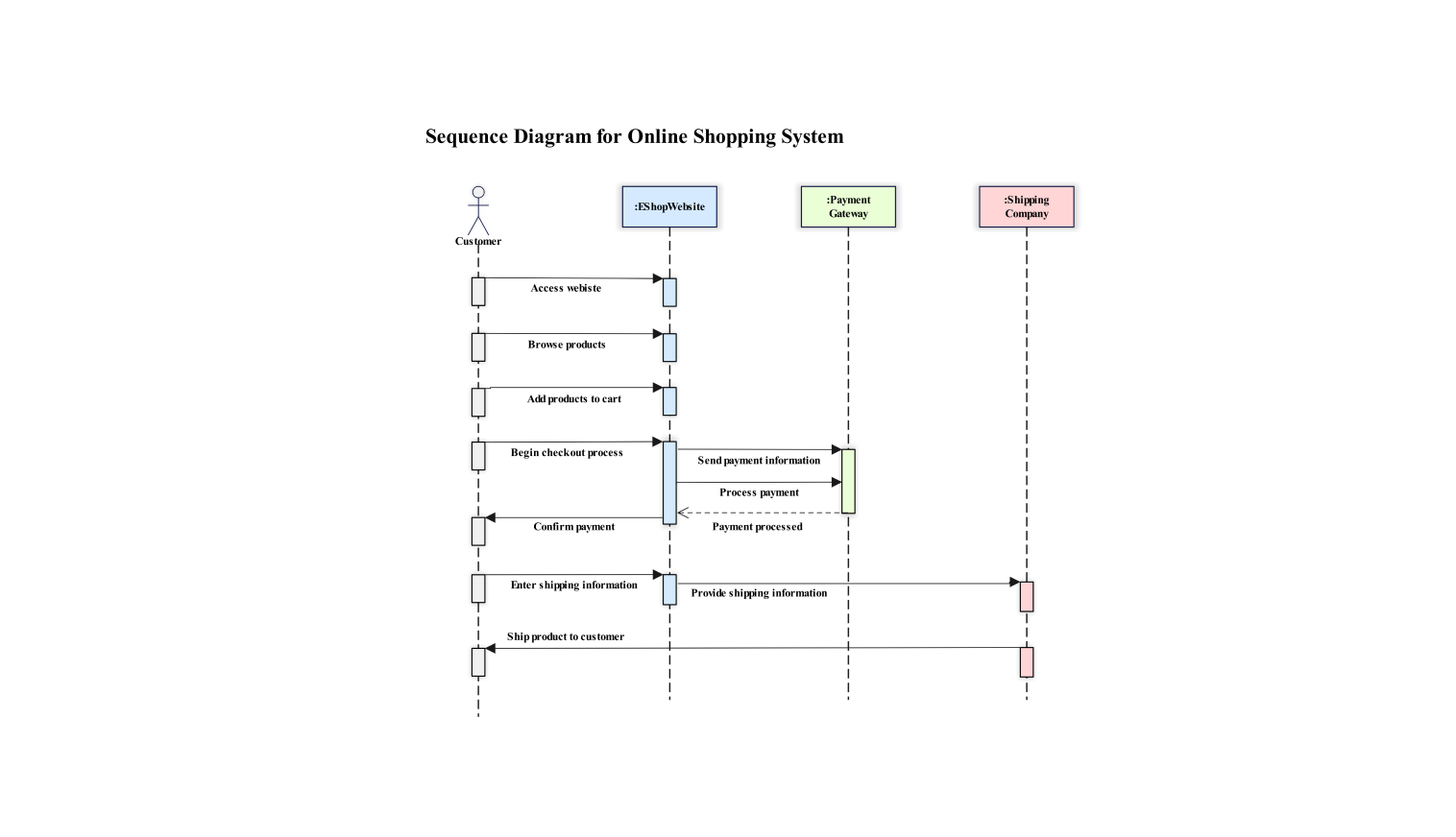- All templates
- UML diagram templates
- Use case diagram customer support
About this use case diagram for customer support
Following is a use case diagram for an online shopping system. The diagram gives an overview of the core functionalities within the management system. Mainly it illustrates the customer support process within the management system.
The use cases involved include contact support, view inquiry history, submit details, view submit details, resolve inquiry, submit feedback, and view feedback.
The customer can contact the support center through the use case contact support to submit their query related to a problem. The users can also view the history of inquiries through the use case view inquiry. The users can submit their details on the system through the use case submit detail.
Customer support can view the details of the submitted details of the user on the system through the use case view submitted details. The customer support resolves the issue depicted using the use case resolve inquiry.
The customers can submit feedback on the system regarding the services offered by the staff through submit feedback use case. The customer support can view the users' feedback through the use case view feedback.
In this use case diagram, the user first contacts the support center. Then the user submits the details which are viewed by the customer support staff. The staff then resolves the inquiry of the customer. The customer can then submit their feedback which the customer support office can view.
How to use the template
Click on Use this template to use it. After the template opens, you can customize the diagram by dragging and dropping new shapes from the libraries present on the left side as per the requirement of your system.
Edit the text. Style the lines, boxes, and text by clicking on the respective elements. You can also save some common elements in your libraries for future use when creating similar diagrams.
Choose a format to save it for later or share it with others. Click on Export to choose the format of your file (.eddx, .pdf, .png, .jpg) to export the file.
Benefits of the use case diagram
Through this use case diagram, one can get a clear understanding of the core functionalities involved in an online shopping system. Mainly you can get a brief overview of the customer support process within the online shopping system
Whether you’re a student, teacher, or developer this diagram will help you in your understanding of the customer support process. Use case diagrams also come in handy during the planning of an expansion plan. Here software developers can use this diagram to better understand the implemented architecture of the system.
FAQs about the use case diagram
-
How do you make a use-case diagram?
Following are the steps you can follow when creating your use case diagram:
- Identify the use cases within the system.
- Identify the actors that will interact with the use cases or the overall system.
- Identify the relationship between the actors and the use cases involved.
- Draw your UML diagram by placing the use cases, and actors and establishing the relationship between them.
When creating a use case diagram, it’s easier and more convenient to use online platforms. Edraw Max is a free-to-use online platform where you can easily create and customize your use case diagram. Plus, it's completely free!
-
When to use extend and include in use case diagrams?
Use "extend" for optional or conditional behavior extending a base use case. Use "include" for mandatory, reusable functionality required by multiple use cases.
-
What are three elements in use case diagram?
The three main elements involved in a use case diagram include the: use cases, the system, and the actors who interact with the system or the use cases.
-
What is an example for extend use case?
Consider the example of the ATM system. Here the printing of the receipt is dependent on the user selecting the option for printing the receipt. Here the printing of the receipt is the extended use case for a base case as it is optional.
Related templates
Get started with EdrawMax today
Create 210 types of diagrams online for free.
Draw a diagram free Draw a diagram free Draw a diagram free Draw a diagram free Draw a diagram free